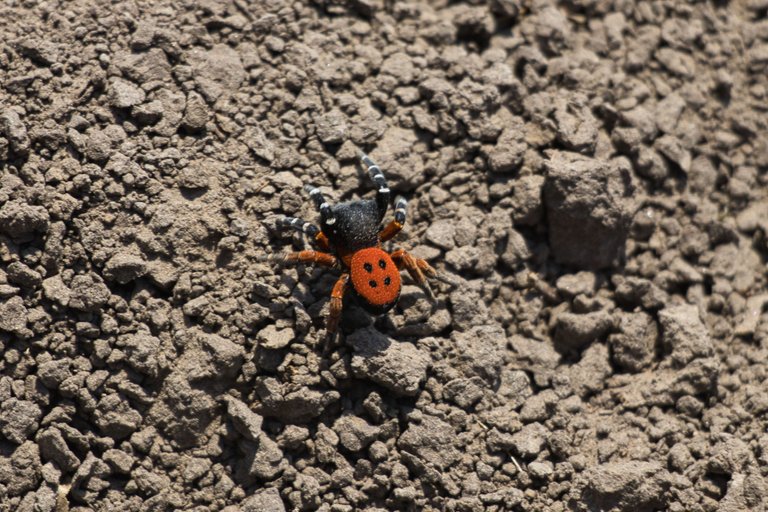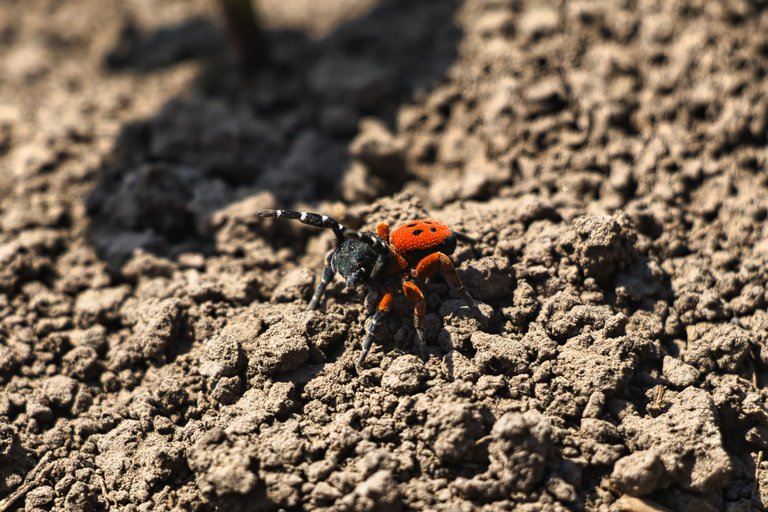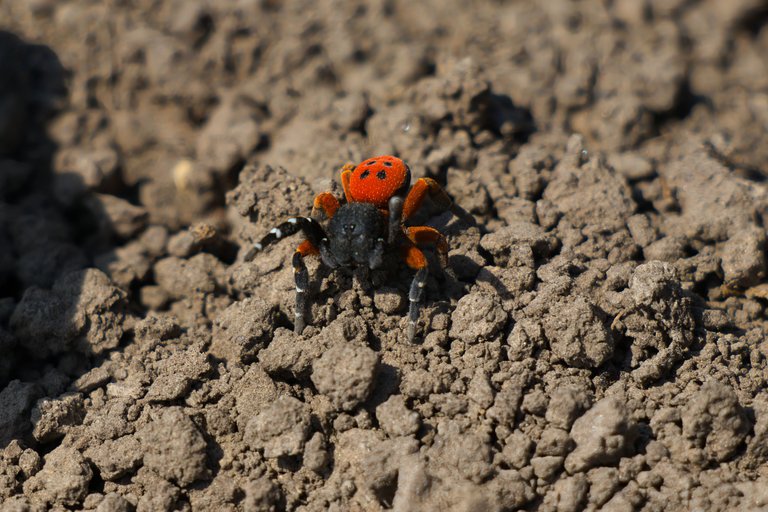Взагалі я зупинився, щоб сфотографувати перепілку, але із-за повороту зненацька виїхала машина і наполохала її. Вистежувати перепілку по полю у мене не було часу, а тому я вже було зібрався сідати на велосипеда і продовжувати свій шлях далі, як помітив цього чудового павука, який прямував по полю у якихось своїх павучих справах.

Через те, що самець та самка мають чіткий статевий диморфізм їх до 2008-го року вважали різними видами. Після того, як їх було вивчено та віднесено до одного виду, він отримав назву Eresus kollari.

Самки цього павука майже все життя проводять у норах, які щільно огортають павутиною. Самець відправляється на пошуки самки, і коли знайде її нору, має виконати складний танець, щоб повідомити про свої шлюбні наміри та не бути з'їденим самкою. Такий ритуал може тривати декілька годин, поки самка не дасть свою згоду. Якийсь час самець проживає з самкою, але невдовзі гине. Самка ж відкладає близько 80 яєць, в кінці літа з'явиться молоде покоління, самка закриє вхід у нору і загине, ставши таким чином їжею для своїх дітей. Наступного року, навесні, молоде покоління вийде з нори, щоб розселитися і побудувати власну нірку.

Мабуть, і цей павук прямував у пошуках нареченої, адже на це йому природа виділяє всього два тижні. Потрібно поспішати!

I actually stopped to take a picture of the quail, but a car suddenly came around the bend and scared it away. I didn't have time to chase the quail across the field, so I was about to get back on my bike and continue on my way when I noticed this beautiful spider, which was walking across the field doing its spider business.

Because the male and female have a clear sexual dimorphism, they were considered different species until 2008. After they were studied and classified as one species, it was named Eresus kollari.

Females of this spider spend almost all their lives in burrows that are tightly wrapped in cobwebs. The male goes searching for a female, and when he finds her burrow, he has to perform a complex dance to communicate his mating intentions and not be eaten by the female. This ritual can last for several hours until the female gives her consent. The male lives with the female for some time, but dies soon after. The female lays about 80 eggs, at the end of the summer the young generation will appear, the female will close the entrance to the burrow and die, thus becoming food for her children. Next year, in the spring, the young generation will leave the burrow to settle down and build their own burrow.

Apparently, this spider was also on his way to find a bride because nature gives him only two weeks to do so. It is necessary to hurry!
Ще не зустрічав, можливо вони на півночі і не водяться.
Я от вперше зустрів, до цього знав, що вони у нас є, але не попадалися якось.
Congratulations @rzity.nomad! You received a personal badge!
Participate in the next Power Up Day and try to power-up more HIVE to get a bigger Power-Bee.
May the Hive Power be with you!
You can view your badges on your board and compare yourself to others in the Ranking
Check out our last posts: